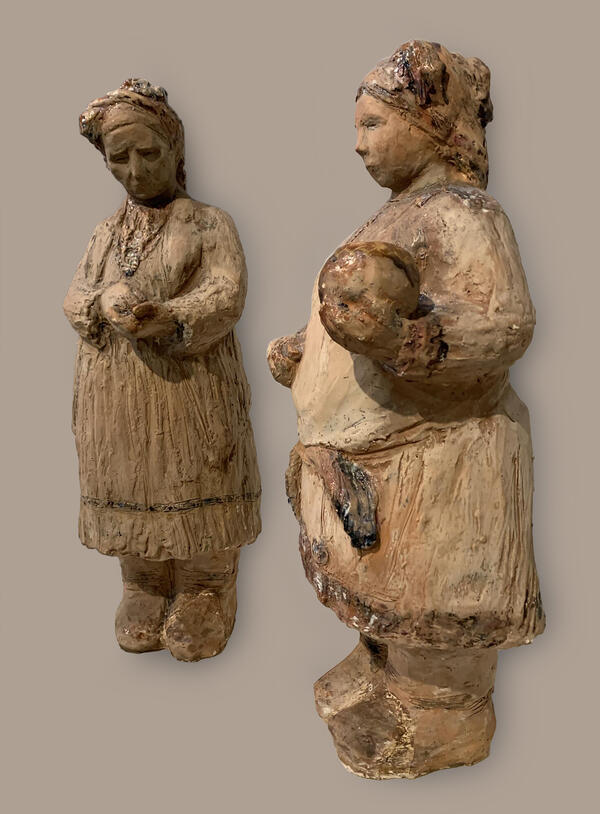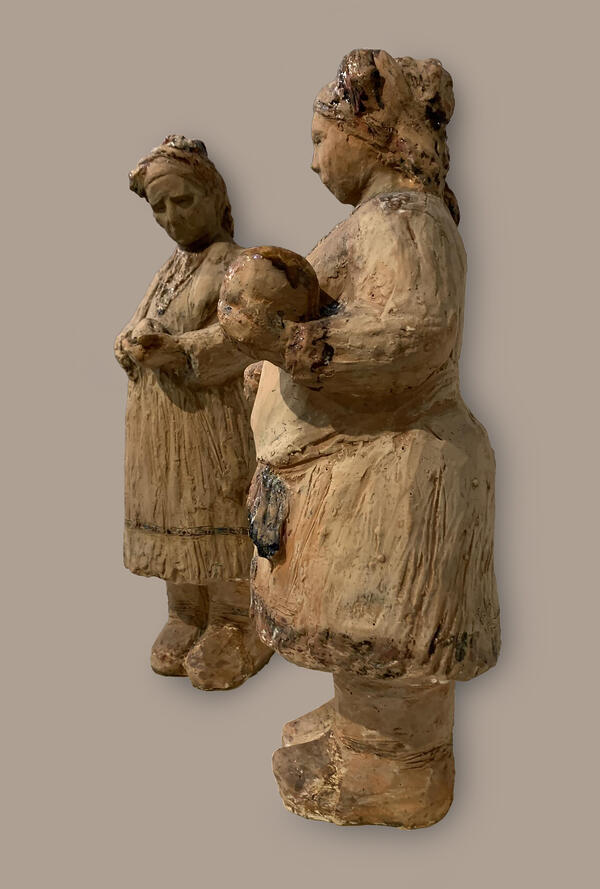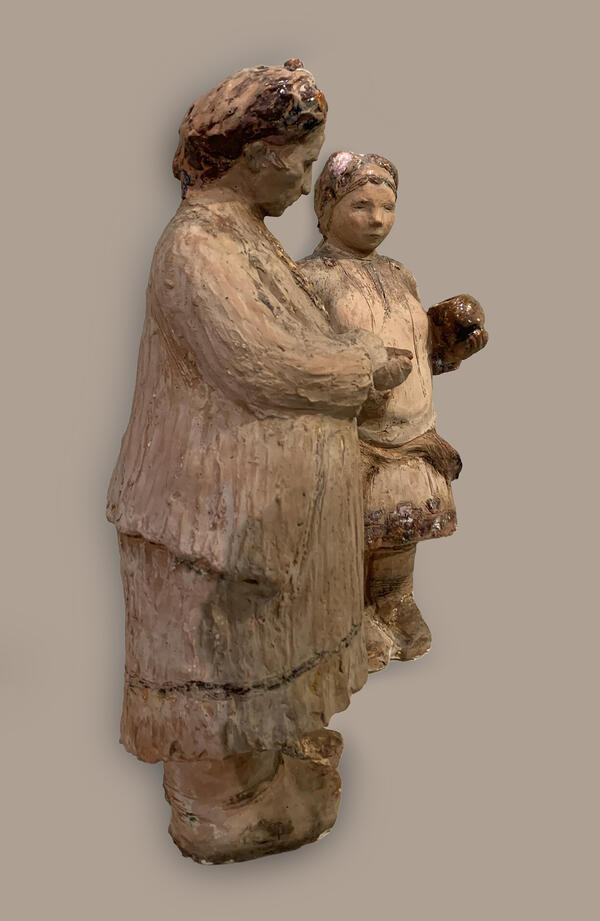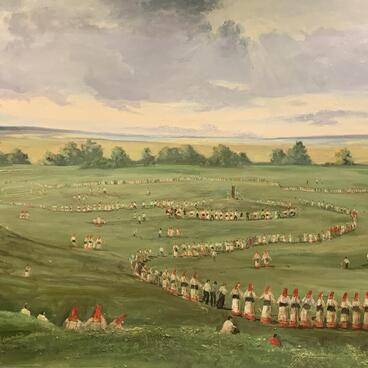A native of the Rostov region, a graduate of the sculpture department of the Mitrofan Grekov Art College in Rostov, Elena Rodionova made a significant contribution to the development of professional fine art in the region. The Honored Artist of the Mordovian ASSR created both indoor and decorative sculpture. In her work, the national theme is represented in female images. The small sculptural work “At the Fair” is a two-figure composition in the genre of everyday life. The rural woman toiler was a favorite character of the sculptor, her creative ideal, and everyday life of labor was a subject of poetization. In the everyday scene, devoid of pathos and drama, Elena Rodionova noticed original features of the Mordovian national character.
The two figures — the saleswoman and the customer — look actual, earthly, and monumental. The sculptor shows two similar but not identical characters. These are people who understand each other, sharing the same concerns and emotions. The sparse details emphasize their individual characteristics. The first figure is a pottery vendor. She is a young, sturdily-built woman, holding a clay pot in her hand. She is dressed in traditional peasant clothes, she is wearing a homemade suit, a Moksha woman’s shirt with a full front and decorative pattern along the bottom edge. The poignancy of the character is emphasized by her precise gesture and natural posture. The second figure is a buyer of ceramic tableware. She is older than the saleswoman and lives in an area where traditions are changing. She is wearing a Moksha shirt, sewn from a store-bought cloth, a man’s jacket; there are porcelain or plastic beads on her chest.
Large and heavy shapes of clothing as well as massive shoes make the figures appear static, even somewhat clumsy. The prosaic nature of the subject conceals a quiet reflection on the unhurried course of life, and the authenticity of details proves the attentiveness of the sculptor. The upright composition is emphasized by rhythmic forms (boots, hem, sash, arms, shoulders, head) united in a cone.
The work is distinguished by its quiet narrative, the absence of vanity, the desire to talk about the complex in a simple, very clear language of sculpture.
The two figures — the saleswoman and the customer — look actual, earthly, and monumental. The sculptor shows two similar but not identical characters. These are people who understand each other, sharing the same concerns and emotions. The sparse details emphasize their individual characteristics. The first figure is a pottery vendor. She is a young, sturdily-built woman, holding a clay pot in her hand. She is dressed in traditional peasant clothes, she is wearing a homemade suit, a Moksha woman’s shirt with a full front and decorative pattern along the bottom edge. The poignancy of the character is emphasized by her precise gesture and natural posture. The second figure is a buyer of ceramic tableware. She is older than the saleswoman and lives in an area where traditions are changing. She is wearing a Moksha shirt, sewn from a store-bought cloth, a man’s jacket; there are porcelain or plastic beads on her chest.
Large and heavy shapes of clothing as well as massive shoes make the figures appear static, even somewhat clumsy. The prosaic nature of the subject conceals a quiet reflection on the unhurried course of life, and the authenticity of details proves the attentiveness of the sculptor. The upright composition is emphasized by rhythmic forms (boots, hem, sash, arms, shoulders, head) united in a cone.
The work is distinguished by its quiet narrative, the absence of vanity, the desire to talk about the complex in a simple, very clear language of sculpture.








